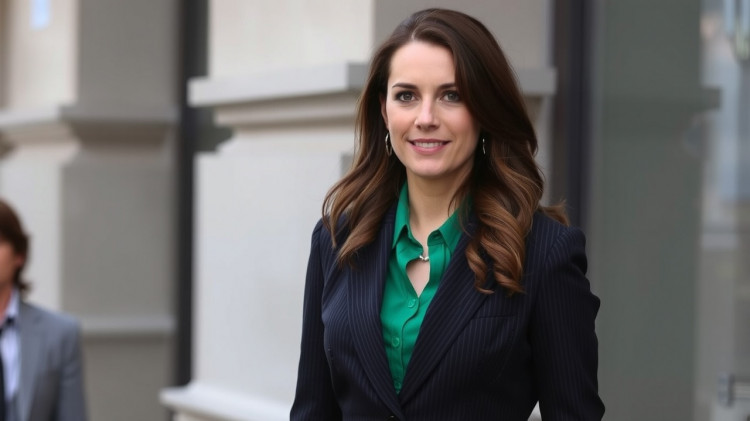
A recent analysis indicates that the introduction of VAT on school fees has resulted in a more than £100,000 increase in the cost of sending a single child to a private school until the age of 18
Now that VAT has been added to school fees, parents who want to send their kids to private schools may have to pay an additional 111,300.
These represent the typical additional costs for a child who will begin attending a private day school in September of this year at the age of five and transfer to a boarding school at the age of twelve until they are eighteen.
In London, the extra expense might reach 129,500.
In the UK, it costs an average of 76,900 more to send a child to a private day school from the age of five to eighteen. The price might be almost 95,700 more in London.
The analysis accounts for the average annual fee increase since 2016 of 4 percent.
Rathbones, a wealth management firm, compiled the figures, which indicate that families who have opted to go private are paying significantly more than they would have before the new VAT regulations took effect on January 1.
The average cost of sending a child in the UK to a private day school between the ages of five and eighteen, after VAT, is 461,431, according to the data.
For a couple making 150,000, this is equivalent to four years and three months' worth of income after taxes.
It costs 667,900 to start day school at age five and start boarding at age twelve to eighteen, if the full 20 percent VAT is included. This is equivalent to six years and two months of after-tax income for the same couple.
"Adding the full 20 percent VAT to fees has a significant impact on parents' finances over a child's school career, and some may decide they cannot afford the expense or need to consider other ways to manage the costs of education for their family," says Faye Church, senior financial planning director at Rathbones.
However, it was already established that paying for a child's private education required a significant financial commitment; before VAT was added to fees, the average cost was approximately 380,000 for day schools and 556,000 for day and boarding schools.
Naturally, this will increase if there are multiple children, and we are hearing from worried families who are receiving assistance in making plans for this.
Send an email to editor@BFIA . com if you would like to share a financial story.
The VAT fee increase is being passed on to private schools.
On January 1, the government's new policy of levying VAT on private school tuition went into effect.
In order to finance improvements in the state sector, Labour pledged in its election manifesto to repeal the previous VAT exemption on school fees.
Ahead of the hike, some private schools increased their tuition at the beginning of the school year. They were able to avoid two separate fee increases during the academic year because fees are typically raised in September to account for growing expenses.
In the past, the government said it did not anticipate that schools would fully implement the tax increase, estimating that overall fees would likely rise by about 10%.
The government has understated the policy's impact, according to a Telegraph analysis that focused on fee adjustments from 964 private schools in England, Scotland, and Wales.
According to the Telegraph, a fifth of these schools are raising fees by the full 20 percent, while about half are raising fees by 15 percent or more. In January, for instance, the renowned Eton College raised its tuition from 17,583 to 21,099 points per term.
The average fee increase, according to the Telegraph, was 14%.
According to the government, levying VAT on private schools will generate £17 billion annually by 2029 - 2030. In the state system, where 94% of children receive their education, it has pledged to use this funding to hire 6,500 new teachers and raise standards.
Bridget Phillipson, the education secretary, stated that "we must build an education system where every child can achieve and thrive... high and rising standards cannot just be for families who can afford them."
The change, according to critics, will affect hardworking families who prioritize their children's education by making other financial sacrifices.
Families that can only barely afford the fees at lesser-known schools may find themselves priced out, while the wealthiest families with children attending elite schools like Harrow and Eton may be able to absorb higher costs.
More than 80,000 children could be pulled out of private school between September and the end of the academic year, according to a survey conducted by wealth management company Saltus.
The question of whether state schools have enough room to accommodate the possible influx of former private school students has been brought up by this.
Would private school closures result from VAT?
According to government estimates, 37,000 private school students, or 6% of the student body, will drop out of school as a result of the VAT on fees.
77 private schools have announced plans to close since the policy was announced in October 2023, according to government data, according to the Independent Schools Council (ISC). The ISC cautions that many local governments are unable to accommodate students from private schools who are moving to the public sector.
Conservative Hertsmere MP Sir Oliver Dowden has told the BBC that the VAT policy is causing at least two local schools to close: Immanuel Prep, a Jewish faith school, and St. Hilda's prep school.
Additionally, a lot of families are demanding clarification on the policies that will be implemented to assist students with special educational needs and disabilities (SEND), especially in cases where the state system does not provide adequate support.
Critics have suggested that a significant amount of the £1 billion increase in SEND funding announced by Chancellor Rachel Reeves in her Autumn Budget could be used to close deficits.
According to SchoolsWeek, government statistics indicate that private schools were closing at a rate of about 85 per year between 2013 and 2023, even before the recent announcement on VAT.
What is the cost of private education?
Average fee information is released annually by the Independent Schools Council (ISC) in its annual census. According to the most recent report, the average day school's annual fees for the 2023 - 2024 academic year were £18,000.
For day students attending boarding schools, this number rose to about 24,000, and for the typical boarder, it rose to about 42,500.
After the VAT changes, we can anticipate that these numbers will rise dramatically in the report's upcoming edition. Should all schools implement the full 20 percent, the average daily tuition could rise to about 21,600.
It follows a string of cost increases in recent years, mostly brought on by changes to the Teachers Pension Scheme and inflation. Day school fees increased by an average of 8% during the 2023 - 2024 school year.
According to Telegraph analysis, most schools are raising fees by an average of 14 percent, which is marginally less than this. This would still result in an average daily school fee of £20,520.
Private school costs by region.
Regional differences in private school costs are significant, with London, predictably, having the highest costs.
If the full VAT is passed on by schools, parents in London will be required to pay nearly 96,000 more for day schools for children aged five to eighteen and 129,500 for day and boarding schools.
In the capital, attending a day school from the age of five to eighteen will cost about 574,000. When children start day school at age five and go to boarding school at age twelve, the number rises to 777,200.
In Northern Ireland, the impact will be the least severe, affecting day schools by 30,800 and day and boarding schools by 60,800. However, 184,800 is still needed for day school for students ages five to eighteen. 365,000 is spent on day school at age five and boarding school at age twelve.
Based on data from Rathbones, the table below illustrates the additional expenses parents of students starting at age five and continuing their education until age eighteen face nationwide if the full 20 percent VAT is applied. All figures are based on the assumption that fees will increase by 4% annually.
If you're having trouble paying your school fees, there are four things to think about.
Planning ahead is crucial if you believe the policy change may affect your ability to pay for your child's education because removing them from their current school at the wrong time can disrupt their education. These are four important things to think about.
1. Think about the unstated expenses associated with moving
Some parents claim that the rising costs of private schools have made them think about moving. Some want to move closer to a different private school with cheaper tuition, while others want to move to a local authority area with better state schools. If you want to use the proceeds from the sale of your home to support your child's education, downsizing is another choice.
It's crucial to keep in mind, though, that moving has a lot of unstated expenses. The average cost of moving a house in the UK, including conveyancing, survey, estate agent, stamp duty, removal, and EPC costs, is 14,432 according to comparison website Reallymoving.
When calculating any savings, it is crucial to keep this in mind because the amount could nearly cover a year's worth of fees. See "Are you better off moving house to beat Labours private school fees hike" for more analysis.
2. If grandparents are making payments, educate yourself on inheritance tax regulations
Grandparents are increasingly assisting with school fees. However, before you decide, you should be aware of a few crucial tax laws.
Gift-giving is subject to stringent regulations set by the taxman to stop families from evading inheritance taxes. A person may give away up to £3,000 in tax-free gifts annually. Nonetheless, a transfer that exceeds this threshold is typically categorized as "potentially-exempt." Stated differently, a gift is only exempt from inheritance tax if the giver lives for seven years following the gift.
The guidelines regarding potentially-exempt transfers remain in effect even if the grandparent pays the grandchild's tuition directly rather than transferring the funds to the child's parents.
Certain exceptions exist. For instance, regardless of their size, "gifts from surplus income" are exempt from inheritance tax. However, the giver must be able to demonstrate that the gift was made with income rather than capital in order to be eligible. The gift must also not negatively affect the giver's quality of life.
3. Check to see if your school provides any discounts or support systems
Staff members' children and siblings may be eligible for discounts at certain schools. Additionally, you might be eligible if you are employed in a specific field, like the military or the clergy.
Finding out if there are any scholarships available is another worthwhile endeavor. If your child does well in school or in a particular subject, like music, art, or sports, you might be able to get one.
Hardship arrangements and bursaries are occasionally available to help struggling families. But as one BFIA reader recently noted, with the government implementing VAT, schools may be the first to cut back on scholarships and bursaries. This is a result of their financial support from parents who pay fees.
4. Think about investing if you are making plans for the future
You might think about putting some cash into an ISA for stocks and shares if you don't currently have children enrolled in private school but are making plans for the future. If you want to weather any short-term volatility, you should have a reasonable time horizon, ideally 510 years.
If you put £10,000 into a stocks and shares ISA on the day of the child's birth and were able to earn an average return of 6% annually, the investment might be worth about £19,000 by the time the child reaches the age of 11, or secondary school age. When determining whether you could afford a private education, this amount wouldn't be crucial, but it might cover about a year's worth of tuition.
This is important to note because, instead of opening a junior ISA in your child's name, you would have to use up some of your own annual ISA allowance. This is due to the fact that a junior ISA can only have an annual contribution cap of £9,000 and that funds cannot be taken out until the child turns 18.














Leave a comment on: With the implementation of the VAT policy, private school fees can increase by up to £111,300